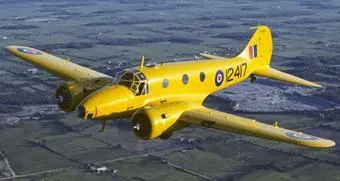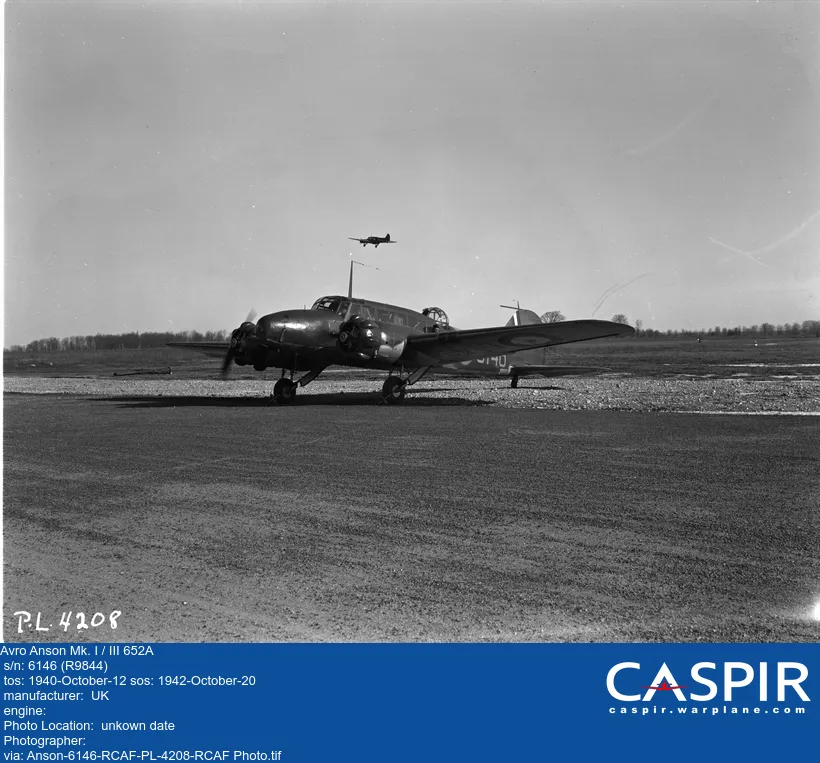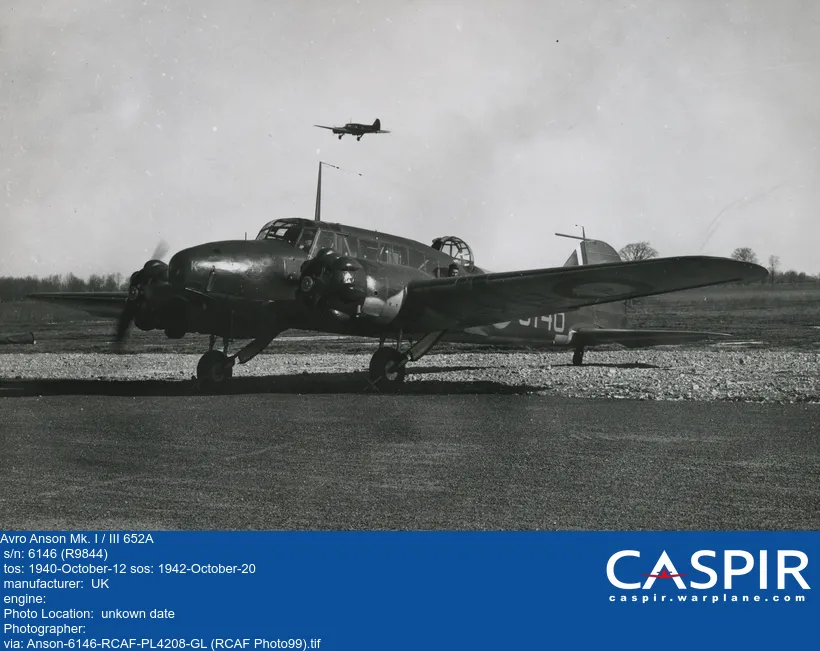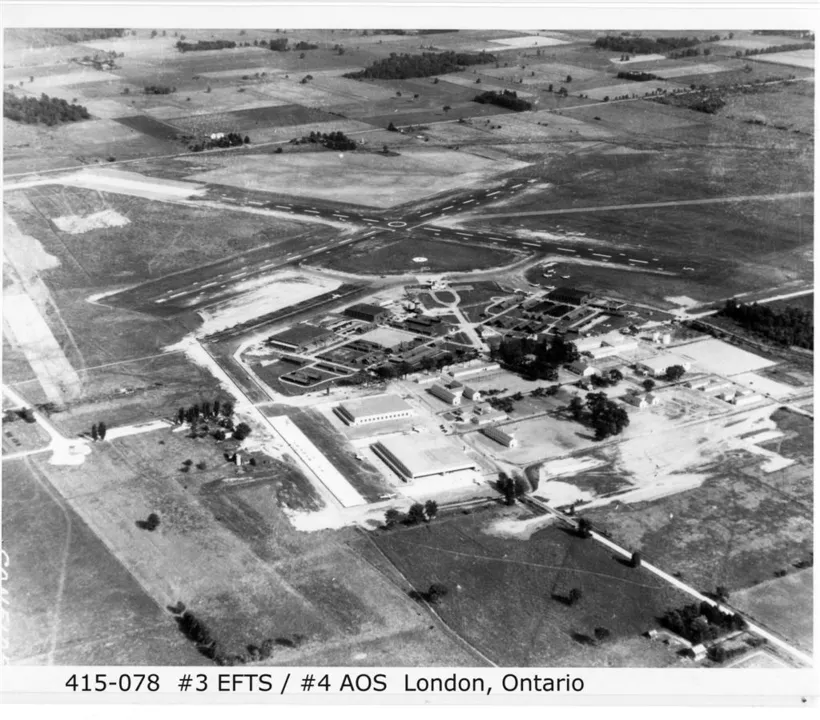Reain, Robert Wilfred (Civilian Pilot)
Killed in Flying Accident 1941-September-02

Birth Date: unkown date
Born:
Parents:
Spouse:
Home:
Enlistment:
Enlistment Date: unkown date
Service
Unit
4 AOS- Air Observer School
Base
London, Ontario, Canada
Rank
Civilian Pilot
Position
Pilot
Service Numbers
This incident involved multiple aircraft:
- Anson Mk. I / III Serial: 6146
- Anson Mk. I Serial: 6141
All the above aircraft in the above list are referenced in this report.
Crew or Other Personnel
Anson 6141
Accident Card - Avro Anson Mk. I serial:6141
This accident involved 2 aircraft on 1941-September-02. They are: Anson s/n 6141, Anson s/n 6146.
This accident involved 7 people. Ammon FW, Lamount JA, Lutkin O, Marshall OR, Reain RW, Weir RJ, Fapazin R
This accident had 2 fatalities. Civilian Pilot Oscar Lutkin Killed in Flying Accident service no: Anson 6141, Civilian Pilot Robert Wilfred Reain Killed in Flying Accident service no: Anson 6141
Anson serial: 6141

Canadian Warplane Heritage Museum
The Museum's Anson Mk. V was built by MacDonald Brothers in Winnipeg in 1944. It flew with No. 7 Photographic Wing and No. 414 Squadron in Ottawa on photo survey work until the late 1940s. In 1956, it was purchased by INCO and used for mineral surveying until 1980, when it was donated to the Museum. The exterior is painted in the yellow colour common to all BCATP trainers and is in its same wartime RCAF markings.
The Avro Anson was known by a number of nicknames including "Faithful Annie" or "Flying Greenhouse". It was the first aircraft to be flown by the Royal Canadian Air Force to have a retractable undercarriage, which was a comparative novelty in 1936. In 1940, a Canadian government owned company, Federal Aircraft Limited, was created in Montreal to manufacture the Anson for Canadian use. Nearly 3,000 Anson aircraft were produced and, in the early days of the British Commonwealth Air Training Plan (BCATP), the Anson was the standard trainer for many pilots, observers (navigators), wireless operators and bomb aimers. More than 20,000 aircrew received training on the Anson. In Canadian service, the aircraft was substantially re-designed with the substitution of North American engines and many other airframe and equipment changes. Harold Skaarup web pages
Aircraft Images
Anson 6146
Anson Mk. I / III 6146
Ex RAF R9844. To No. 1 Training Command on 11 November 1940, for the establishment of No. 4 Air Observer School at London and No. 5 Service Flying Training School at Brantford. With No. 4 AOS when it received Category B damage at London City Airport at 21:25 on 2 September 1941. Was struck by Anson 6141 as it attempted to take off. To de Havilland Canada for repairs and conversion to Mk. III, 24 September to 29 December 1941. Had 655:10 logged time when it arrived there. To No. 1 Training Command when completed. Category A crash at Hagersville on 4 September 1942.1940-10-12 Taken on Strength No. 6 Repair Depot 2019-08-20
1941-September-02 Accident: 4 Air Observer School Loc: Aerodrome Names: Ammon | Fapazin | Lamount | Lutkin | Marshall | Reain | Weir
1942-September-04 Accident: 16 Service Flying Training School Loc: Aerodrome Names: Roemelle
1942-10-20 Struck off Strength Struck off, reduced to spares and produce by No. 6 Repair Depot 2020-10-05


Anson 6141
Anson Mk. I 6141
Ex RAF W1505. To No. 1 Training Command on 11 November 1940, for use by No. 4 Air Observer School at London, Ontario. Struck Anson 6146 while attempting to take off at London at 21:25 on 2 September 1941. Flown by civilian pilot O. Lutkin, 3 other crew on board. To de Havilland Canada on 24 September 1941 for inspection and crash repairs, scrapped there.1940-10-12 Taken on Strength No. 6 Repair Depot 2019-08-20
1941-September-02 Accident: 4 Air Observer School Loc: Aerodrome Names: Ammon | Fapazin | Lamount | Lutkin | Marshall | Reain | Weir
1942-03-21 Struck off Strength Struck off, reduced to spares and produce 2019-08-20
Unit Desciption
4 AOS (4 Air Observer School)
Air Observers were later called "navigators". For recruits in this stream, the training path after ITS was 8 weeks at an Air Observer School (AOS), 1 month at a Bombing & Gunnery School, and finally 1 month at a Navigation School. The Air Observer schools were operated by civilians under contract to the RCAF. For example, Nos. 7, 8, and 9 were run by CP Airlines. However, the instructors were RCAF. The basic navigation techniques throughout the war years were dead reckoning and visual pilotage, and the tools were the aeronautical chart, magnetic compass, watch, trip log, pencil, Douglas protractor, and Dalton Navigational Computer. They trained in the Avro Anson.
The School was established at London, Ontario. The former school is now the London, Ontario International Airport.
More information on the RCAF Station at London can be found at RCAF.Info - RCAF Station London ON
